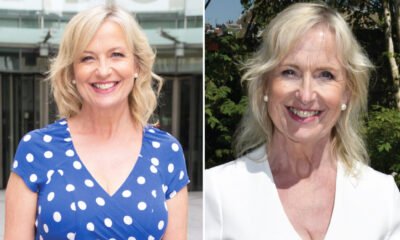Guide
Replacing Old Models with Smarter Testing
Published
2 months agoon
By
Archie
Scientific research has always been shaped by innovation. As new methods emerge, old approaches are reconsidered, especially when it comes to testing the safety of chemicals, medicines and consumer products. Traditional animal-based models have long been the default, but they come with well-known limitations. Today, there is a strong shift towards smarter testing methods that better reflect human biology, reduce unnecessary animal use and provide faster, more reliable insights. This shift is not only practical but also necessary for modern science.
The Problem with Outdated Testing Methods
For decades, animal models have been used to understand how chemicals or drugs might affect the human body. While these studies provided some early safety guidance, the reality is that animal systems often don’t accurately predict human responses. Differences in physiology, metabolism and genetic makeup can lead to misleading results.
Beyond scientific limitations, animal testing also raises ethical concerns. Public awareness has grown, and with it, pressure to find approaches that both protect human health and respect animal welfare. Outdated models are slow, costly, and sometimes fail to offer data that translates effectively to real-world human outcomes.
The Push Towards Human-Relevant Alternatives
Science has been moving steadily towards models that more closely mirror human biology. This includes a range of non-animal methods, such as cell cultures, computer modelling and advanced tissue engineering. These approaches allow researchers to study specific human systems in controlled environments, offering clearer insight into how substances interact with our bodies.
One of the most significant areas of progress is in respiratory research. With air quality, workplace safety and inhaled medicines being such central issues, accurate testing of inhalation toxicity is essential. Old models struggle to provide the precision needed, which is why smarter testing solutions are making such an impact.
Why Smarter Testing Matters for Respiratory Safety
The lungs are a highly sensitive and complex organ system. Testing the effects of inhaled substances requires models that replicate the structure and function of human lung tissue as closely as possible. Animal models often fail here, as they differ in airway anatomy, immune response and overall lung physiology.
Smarter testing methods, designed to work directly with human-relevant biology, overcome these barriers. They allow scientists to identify potential risks more accurately, ensuring that harmful substances are caught early and safe ones can move forward with confidence. This makes research not only more reliable but also more efficient, speeding up the time it takes to bring safe innovations to market.
Introducing Innovative Non-Animal Methods
Modern science is now using innovative tools that go far beyond traditional cell cultures. Advanced systems replicate the three-dimensional structure of the lung and simulate the way air and substances move through respiratory tissue. These models give researchers the chance to study real human-like responses without the complications that come from using animals.
A leading example of this shift is the use of in vitro Inhalation NAMs. These new approach methodologies (NAMs) are specifically designed to replicate how human lungs respond to inhaled substances. By providing more accurate, predictive data, they help replace outdated animal tests while ensuring safety standards remain uncompromised.
The Benefits of Adopting Smarter Testing Approaches
Replacing old models with smarter testing methods comes with clear advantages. First and foremost, they provide results that are more directly applicable to humans. This human relevance means fewer surprises when products reach clinical trials or real-world use.
Secondly, these models are often more efficient. Studies that once took months can now be performed in a fraction of the time. Costs are reduced, resources are saved, and research pipelines move forward with less delay.
Thirdly, smarter methods align with growing global expectations for ethical testing. Regulators, companies, and consumers increasingly want assurance that science is moving away from animal use. Embracing advanced methods demonstrates commitment to both innovation and responsibility.
Driving Innovation in Industry and Research
Industries that depend on safety testing, such as pharmaceuticals, consumer products and chemicals, benefit enormously from these developments. Smarter testing allows them to bring safer products to market faster while maintaining compliance with strict safety standards. Researchers, too, gain access to tools that improve the reliability of their studies and open new opportunities for discovery.
This shift doesn’t just benefit science; it supports society as a whole. Safer products mean healthier people and environments. Faster, more efficient research means new treatments and solutions can reach those who need them sooner.
Looking Ahead to the Future of Testing
The move from outdated models to smarter testing is not a passing trend but a lasting transformation. With technology advancing rapidly, the tools available to researchers are becoming ever more sophisticated. The focus now is on refining these systems, standardising their use and expanding their applications across industries.
In the coming years, we can expect to see smarter testing become the standard rather than the exception. As regulatory bodies recognise and adopt these methods, the reliance on animal models will continue to shrink. For scientists and companies committed to advancing safety and innovation, this is an exciting step forward.
In Conclusion
Replacing old models with smarter testing isn’t just a scientific upgrade; it’s a shift towards better safety, stronger ethics and faster progress. By adopting advanced human-relevant methods, researchers and industries can make decisions that are more accurate, efficient and aligned with modern expectations. The future of testing lies in embracing innovation, and the advancements already underway are proving that a smarter path is possible.
You may like


How to Plan a 48-Hour Luxury Trip to London

Benefits of Partnering with an Expert Foundry

Choosing the Right Supported Independent Living Option for Your Needs

Why Companies Worldwide Are Hiring Power BI Developers

Experience Pure Android Gameplay with MuMuPlayer Emulator

A Guide To Solar PV For Homeowners

How to Convert a Historic Building into a Hotel: a 2025 Guide

How You Can Integrate AI into Your Small Business For Faster Growth

File Recovery on Android: Myths vs. Facts

Cooler, Safer, Clearer: Why Quality Window Tint Is a Smart Upgrade in 2025

Carol Kirkwood’s Journey: Her Real Age, Husband, Career, and More

Revolutionizing Healthcare: The Emergence of AI-Driven Analytics

How Machine Learning and AI are Redefining the Future?

Aliza Barber: Meet Lance Barber’s Wife, Age, Life, Profile, Career and Net Worth

Evelyn Melendez: Jordan Knight’s Wife Bio, Marriage, Family, Career and Net Worth

Ilan Tobianah Biography: Family, Marriage, Lifestyle, Career and Net Worth

Who was Alice Marrow? Everything to Know About Ice-T’s and His Mother

King Von’s Autopsy Report: The Truth Behind the Tragic Death

Meet Otelia Cox: The Supportive Wife of Tony Cox – A True Fairy Tale Romance

Tea Leoni and Tim Daly Split – A Closer Look at Their Relationship and Breakup

How to Plan a 48-Hour Luxury Trip to London

Benefits of Partnering with an Expert Foundry

Choosing the Right Supported Independent Living Option for Your Needs

Why Companies Worldwide Are Hiring Power BI Developers

Experience Pure Android Gameplay with MuMuPlayer Emulator

A Guide To Solar PV For Homeowners

How to Convert a Historic Building into a Hotel: a 2025 Guide

How You Can Integrate AI into Your Small Business For Faster Growth

File Recovery on Android: Myths vs. Facts

Cooler, Safer, Clearer: Why Quality Window Tint Is a Smart Upgrade in 2025
Category
Trending
-

 News3 months ago
News3 months agoCarol Kirkwood’s Journey: Her Real Age, Husband, Career, and More
-

 Health2 years ago
Health2 years agoRevolutionizing Healthcare: The Emergence of AI-Driven Analytics
-

 Technology2 years ago
Technology2 years agoHow Machine Learning and AI are Redefining the Future?
-

 Celebrity2 years ago
Celebrity2 years agoAliza Barber: Meet Lance Barber’s Wife, Age, Life, Profile, Career and Net Worth
